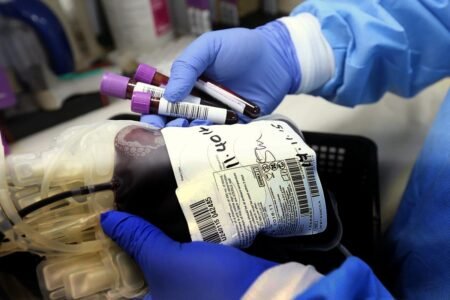The Regulation on Health Technology Assessment (HTA), a deliverable of the EU Pharmaceutical Strategy, was adopted on 13 December.
Advertisement
What is Health Technology Assessment (HTA)?
Health Technology Assessment (HTA) summarises information about medical, economic, social and ethical issues related to the use of a health technology. Examples of health technologies include medicinal products, medical equipment and diagnostics. HTA answers clinical questions like: “How well does the new technology work compared with existing alternative health technologies”? It can also answer economic questions like “What costs are entailed for the health system”? HTA is therefore a key tool for Member States to ensure the quality, accessibility and sustainability of healthcare.
What does the new HTA Regulation cover?
The HTA Regulation focuses on clinical aspects of HTA, i.e. the relative clinical effectiveness and relative clinical safety of a new health technology as compared with existing technologies. Member States’ HTA bodies will conduct Joint Clinical Assessments of new medicines and certain high-risk medical devices. They will also engage in Joint Scientific Consultations to advise technology developers on clinical study designs that generate appropriate evidence. Moreover, “horizon scanning” exercises will identify, at an early stage, promising health technologies, to help health systems prepare for them. In addition to this mandatory scope of the HTA Regulation, Member States may also engage in further voluntary cooperation, e.g. on health technologies other than medicines and medical devices, or on economic aspects of HTA.
Who will benefit from the new rules?
Patients and clinicians will benefit from Joint Clinical Assessment reports that are of high scientific quality, transparent and accessible to the public. Health experts, the producers, and most importantly of all patients, will have a new framework that will help address unmet medical needs and facilitate access to innovative medicines and some high-risk medical devices.
Member States will be able to pool their HTA resources and expertise. Joint Clinical Assessments will be high quality, timely scientific reports that Member States will give due consideration to in their national HTA processes. The HTA Regulation will therefore support Member States in taking more evidence-based and timely decisions on patient access to new medicines and medical devices.
Developers in the pharmaceutical and medical device sectors will have more clarity and predictability concerning the clinical evidence requirements for HTA.
Developers will also benefit from efficiency gains when submitting clinical evidence for HTA, as there will be only a single EU-level submission file for Joint Clinical Assessments (rather than, as in the past, multiple parallel submissions to the different national HTA systems).
How will Member States use Joint Clinical Assessment reports?
Article 13 of the HTA Regulation stipulates that Member States will give due consideration to the Joint Clinical Assessment report when carrying out a national HTA on the health technology concerned. They will also annex the published Joint Clinical Assessment report to the HTA report at Member State level. In addition, for each national HTA on a technology which has been subject to Joint Clinical Assessment, Member States will provide information on how the Joint Clinical Assessment has been considered in the national process.
Member States may complement the Joint Clinical Assessment with additional clinical analyses that may be needed in their national HTA process (e.g. analyses related to national disease epidemiology or the specific national healthcare context). Member States may also complement the Joint Clinical Assessment with non-clinical analyses (e.g. on budget impact or cost-effectiveness). Finally, Member States remain responsible for drawing conclusions on the overall value of a new health technology for their healthcare system, and pricing and reimbursement decisions.
Finally, Member States will report to the Commission, no later than two years after the date of application of the new HTA Regulation, on the consideration of joint work in their national HTA processes, including the way joint clinical assessment reports have been considered when carrying out national HTAs. Member States will also report on the workload of the Coordination Group and on whether they have considered the developed methodological guidance.
How will the new framework of EU HTA cooperation work in practice?
The Regulation establishes a Member State Coordination Group of members designated by each country. The Coordination Group will oversee the joint technical work carried out by subgroups of national representatives for specific types of work (e.g. Joint Clinical Assessments, Joint Scientific Consultations, or methodological guidance documents). External experts, including clinicians and patients, will also be able to provide input during the preparation of joint work (Joint Clinical Assessment and Joint Scientific Consultation). On the other hand, stakeholder organisations, including patient organisations, healthcare professional organisations, clinical and learned societies, as well as health technology developers and payers will be able to provide input on non-product related matters, such as on the drafting and preparation of methodological guidance documents. A Stakeholder Network will be set up to facilitate a regular dialogue between European umbrella stakeholder organisations and the Coordination Group.
The Commission will serve as secretariat to the cooperation, ensuring that procedures are followed and joint work is produced in a timely and transparent manner. The Commission will also facilitate exchange of information with other relevant EU agencies and bodies (e.g. the European Medicines Agency).
What are the next steps in implementing the HTA Regulation?
The HTA Regulation will enter into force in January 2022 and it will be applied three years later (January 2025). This means that joint work such as Joint Clinical Assessments and Joint Scientific Consultations will only be carried out from January 2025. The three year delayed application period aims to ensure that there is enough time to set up the organisational framework of the HTA Regulation (e.g. the Coordination Group and its subgroups, the Stakeholder Network) and to adopt the implementing and delegated acts and methodological guidance documents provided for by the Regulation. The delayed application will also give Member States time to adjust their national HTA legislation and processes to the new HTA Regulation as needed, and stakeholder organisations, in particular health technology developers, will have time to familiarise and comply with the requirements of the new framework.
As a first implementation step following entry into force in January 2022, the Commission will set up the Coordination Group composed of representatives designated by Member States. The first meeting of the Coordination Group is tentatively planned in June 2022. Around the same time, a conference is envisaged to inform a wide range of stakeholder organisations on the new Regulation and its implementation. The Commission will also launch the procedure to set up the Stakeholder Network provided for by the Regulation.
Who will implement the HTA Regulation?
The HTA Regulation grants implementing powers to the Commission and confers to it powers to adopt delegated acts. When defining the measures contained in the implementing acts, the Commission will be assisted by a committee composed of representatives from all EU countries (comitology procedure).* On the other hand, in order to prepare and adopt delegated acts, the Commission will have to consult expert groups. Citizens and other stakeholders can provide feedback on the draft text of a delegated act during the publication for feedback according to the Commission’s better regulation agenda.
Source: European Commission






